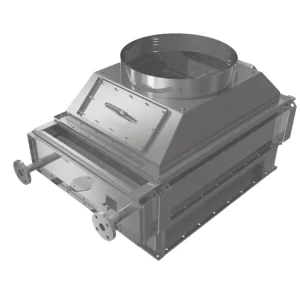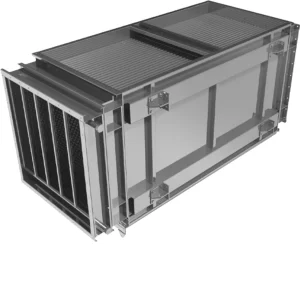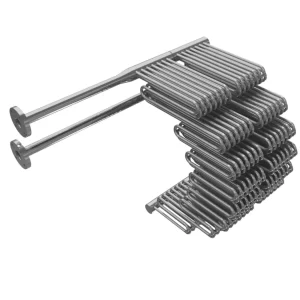ENERGY INDUSTRY
HEAT EXCHANGERS FOR ENERGY OPTIMIZATION
Heat exchangers are a very important product in the optimization of energy transformation processes, whether in thermal power plants, nuclear power plants or hydroelectric power plants, among others. Let’s dive deeper into the uniqueness of each of these systems below:
1. In thermal power plants, heat exchangers are used to transfer heat generated by fossil fuels such as coal, oil or gas to a fluid such as superheated water or steam. This fluid reaches high pressures and drives a turbine that generates electricity. As the fluid drives the turbine, it cools and we condense it using a new heat exchanger we call a condenser. Once condensed, we reuse the fluid to heat it with fossil combustion and generate energy again. In thermal power plants we could find cogeneration plants which, in addition to producing heat, generate electricity, as well as trigeneration plants, which, in addition to producing heat and electricity, generate refrigeration energy, which means greater energy efficiency and sustainability.

2. In nuclear power plants, heat exchangers are essential to control the temperature of the reactor with the help of a coolant. The heat transfer fluid absorbs the heat and transmits it to a steam generator which will convert the energy into electricity. This coolant, once cooled, will return to the start to start the process over. Beyond this aspect of operation, heat exchangers are also used as a preventive measure in diesel engines with the aim of controlling a possible electrical shutdown.
There are many other models of energy generation, all with very particular singularities that we will analyze in other articles. Beyond the explanatory brushstrokes we have made, all projects require in-depth analysis and a highly experienced professional team.
If you have any needs, contact us, we are at your disposal.



